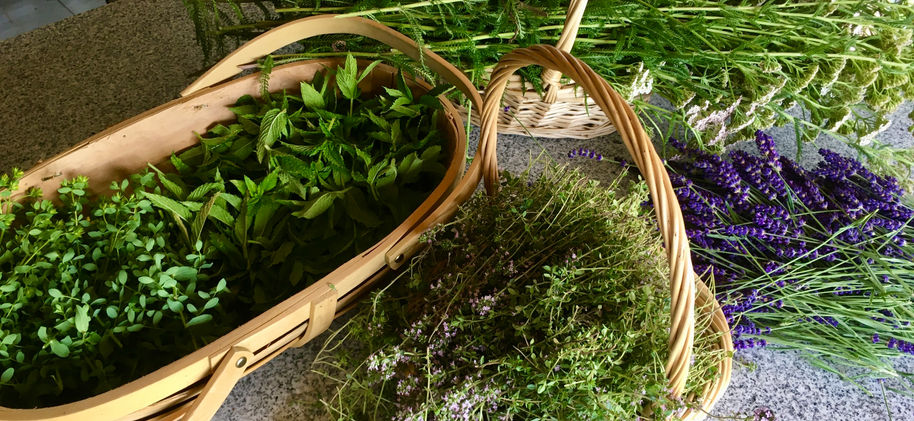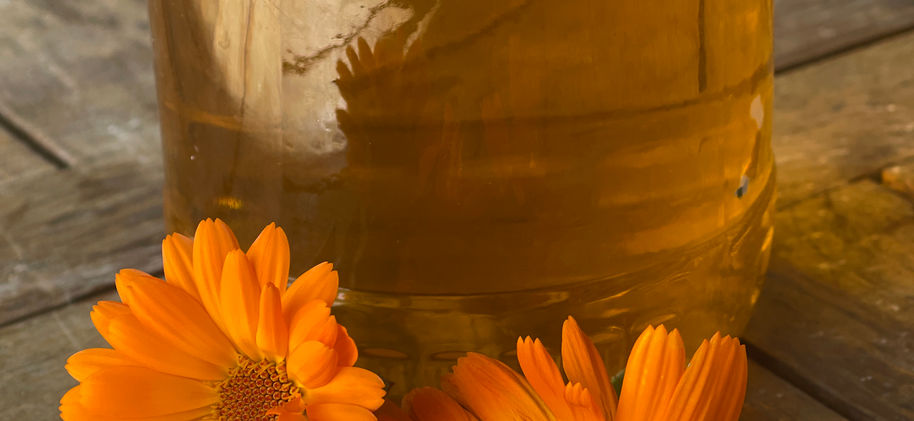
Herbs & Herbal Teas
It is well known that the Chinese having been growing tea for thousands of years and it all comes from the plant Camellia saneness. Interestingly all teas come from the same plant - Black, White, Green, Oolong and Pu'erh and it is they method of growing, harvesting and processing that differentiates the teas.
A trivial fact the Turkish drink the most tea in the world with the British a close second! The slang word for tea in the UK is 'cha' - 'have a cuppa cha' and cha comes from the Mandarin word meaning tea.
If you want more interesting information about tea have a look at https://www.teaclass.com
Tea or rather infusions made from herbs, flowers and sometimes fruit as known as herbal teas or tisanes and where use for thousands or years for healing purposes before using them for refreshment. In England and Europe herbal teas were very much used and the large houses of gentry/landowners and monasteries and priories had walled herb gardens and often stills for processing herbs. Herbs such as Chamomile, Peppermint, Elderflower were all very popular along with Thyme, Oregano, Parsley are all easy to grow. They can be dried or used fresh to give a refreshing brew. Flowers such as Rose (petals and buds), Calendula, Chamomile, Jasmine and Lavender are amongst many flowers infused for tisane.
There are five tastes of herbs which we use our taste buds to recognise, sweet, sour, bitter, umami and salty. There are also astringency and spicy but we use other receptors to recognise these not our taste buds. As a cook, I use these different flavours blended together to enhance food and this is exactly the same when making tea.
Sweet is something our bodies like, as it indicates energy and triggers various emotions - Licorice root is sweet and is an adaptogenic herb, which means it supports the central nervous system. Stevia and Anise Hyssop are good sweet herbs and great for blending in teas to balance out sour and bitter herbs.
Sour is generally used to enhance flavours - lemon, blackberry, cranberry, hibiscus, hawthorn.
Bitter tastes often indicate to us that something is toxic and not good for us and is a natural reflex for us to reject it but with the correct plant, bitter can be very beneficial and help the bodies natural defences. Elecampane, Dandelion, Hops are examples of bitter herbs.
Umami is characterised as a savoury flavour which is associated with protein - Nettles, Nuts, Seaweed.
Salty is found in plants that have minerals such as sodium which give a subtle salty taste such as Cleavers, Horsetail and Oat Straw along with Seaweed. Salt is added cooking as it helps bring out other flavours and a small pinch can be added to teas to bring out sweet or spicy flavours of the other herbs.
Preparing Tea - If you are using fresh herbs you can simply rinse them and put them into a tea pot or glass plunger pot and pour on hot water (just off boiling). Be generous with the herbs as you need to use more fresh herbs than dried as they have a high water content. Leave the tea to steep for 5-10 minutes. If you want to have a cold tea, you can leave until very cool and refrigerate and drink as and when required. These are great refreshing summer drinks where you can use berries and flowers.
If you are using dried herbal tea, use a very good pinch equal to a tablespoon per person with a ratio to one cut of water. The same vessels as above can be used or a teacup with a lid or an infuser as it is important to trap in the volatile essential oils that evaporate with he water. Don't use aluminium or tin pots or vessels as they can impart a metallic taste to the tea.
The teas made here at The Herbal Garden are from organically produced plants grown here in the garden and produced in small batches so they get used up quickly and thus keeping the teas a fresh as possible.







